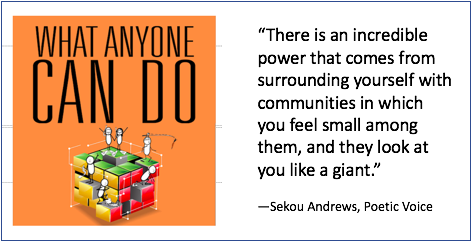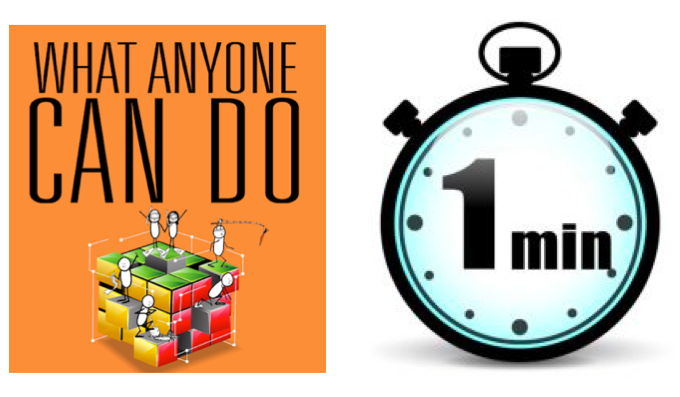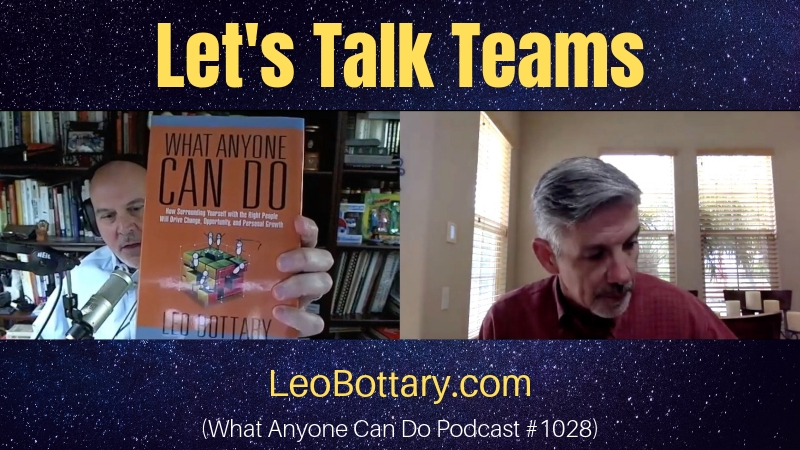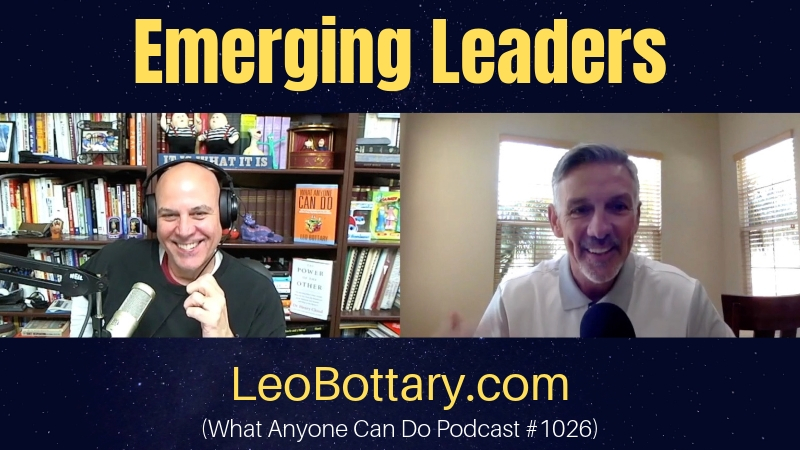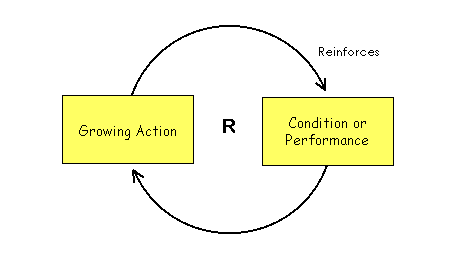Feel free to use this 4-minute video loop at your next mastermind/peer advisory group or team meeting. A big thanks to Vistage UK Chair Bob Battye who supplied most of the images!
Category: collaboration
On Showing Up
Podcast: Play in new window | Download (Duration: 37:19 — 34.7MB)
Subscribe: Apple Podcasts | Spotify | iHeartRadio | TuneIn | RSS | More
We’re about to enter round 3 of the Stanley Cup playoffs. Leo’s Boston Bruins have advanced to the Eastern Conference Finals. Randy’s Dallas Stars are fighting to stay alive in game 7 with the St. Louis Blues to advance to the Western Conference Finals. (A fitting gift as we celebrate Randy’s birthday!) We’re hoping for a Boston vs. Dallas Stanley Cup match-up!
Today, Leo Bottary and Randy Cantrell discuss the first of the three elements necessary for effective group/team performance:
- Show Up
- Step Up
- Follow Up
Want Your Peer Advisory Group To Be Higher Performing?
If you’re a peer advisory or mastermind group member and you want your group to perform at an even higher level, understand that it all starts with you! Being a more valuable group member is the first step to building an even higher performing group. As Jim Kouzes and Barry Posner so famously outlined in their five exemplary leadership practices, it’s up to you to “Model the Way.” You may not be the leader of your group, but you can always be a leader in your group.
After facilitating more than 100 workshops aimed at helping new and experienced peer advisory groups squeeze the most value out of their time together, two findings have consistently emerged: 1) The strength of the overall group rests in the hands its individual members; and, 2) there are three things a member can do to immediately up his/her game to everyone’s advantage: Show up. Step up. Follow up.
Show up. If you believe that 80% of life is about showing up, then understand that to be a really good member, it’s that and then some. If you (and your fellow members) don’t attend meetings consistently, the group will never realize its true potential. I use the five factors for high performing peer groups described in The Power of Peers to help groups assess their current performance against what they believe to be ideal. These factors include: 1) Having all the right people in the room; 2) a safe and confidential environment; 3) valuable interactions that provide meaningful and actionable takeaways; 4) a culture of member-to-member accountability; 5) a servant leader who serves as the steward of the first four factors. Every time you don’t attend a meeting, it’s not just a loss for you, you’re sabotaging the group’s ability to perform at its best. Life happens, but being a great member starts with being there.
Step Up. Since you’re at the meeting anyway, you might as well bring your A game. This starts with being prepared. CEOs, small business owners, and key executives alike have admitted to me countless times that they are less prepared for their group meeting than any other meeting on their calendar. For those who do prepare, it’s obvious to the other members, and best of all, it’s easy. I haven’t had one “prepared” member yet tell me that it takes any more than 15 minutes to get ready for a group meeting. The better prepared you are, the more engaged you’ll be. The more engaged everyone is, the better your group will perform.
Follow up. Let’s say you ask for assistance from your group to either assess a potential opportunity or address a tough challenge. With the group’s help, you arrive at a conclusion as to how you will proceed. Be sure to follow up with the group at the next meeting (and after that as necessary). Letting your members know what you’ve done serves as an expression of gratitude for the time they spent helping you, it contributes to a positive culture of member-to-member accountability, and becomes an invaluable learning opportunity for everyone. This is when everyone learns about what worked and what didn’t work – invaluable information that eventually becomes a critical part of a group’s ever-changing DNA.
While I feel fortunate to have captured a great deal of data about the specifics of how to take any group to the next level, consider this: If your group can’t take my workshop, start with these three action items. You’ll notice an immediate and palpable difference in your group’s performance. Just remember, it all starts with you.
Announcing the WACD Minute!
The What Anyone Can Do Minute is a new video series created to accomplish two goals: 1) Give you a valuable takeaway in one minute; and, 2) use that takeaway as fuel to take a deeper dive toward doing the things anyone can do that most of us never will.
I’ll release 2-3 videos per week on my LinkedIn, Facebook, and Twitter feeds. They’ll also appear on my website’s Video page, where you’ll find the entire collection as they go live. I’ve released two this week already and by visiting https://leobottary.com/videos, you’ll get to preview the one I’ll be releasing in the next few days.
If there’s a topic you’d like me to cover, leave your suggestion as a comment, and you may find it featured in an upcoming episode of the WACD Minute! Enjoy!
On Great Books
Podcast: Play in new window | Download (Duration: 32:13 — 30.1MB)
Subscribe: Apple Podcasts | Spotify | iHeartRadio | TuneIn | RSS | More
If you’re writing and speaking more than you’re reading and listening, it’s time to right the ship! Here are three books you’ll love! When you don’t have immediate access to the right people directly, you can still surround yourself with their ideas! Enjoy!
Amazon links to the books (not affiliate links):
Cracking the Curiosity Code: The Key to Unlocking Human Potential by Diane Hamilton
Late Bloomers: The Power of Patience in a World Obsessed with Early Achievement by Rich Karlgaard
Lifescale: How to Live a More Creative, Productive, and Happy Life by Brian Solis
Let’s Talk Teams
Podcast: Play in new window | Download (Duration: 40:46 — 37.9MB)
Subscribe: Apple Podcasts | Spotify | iHeartRadio | TuneIn | RSS | More
In the wake of Tiger’s win at The Masters, we talk about the value of the people who surround us and how, together, we can do things we would never otherwise achieve.
Jeffrey Hayzlett On Heroes
Podcast: Play in new window | Download (Duration: 34:47 — 32.4MB)
Subscribe: Apple Podcasts | Spotify | iHeartRadio | TuneIn | RSS | More
Join us today as we talk about heroes, hero cultures, paying it back, and paying it forward! Visit HeroFactorBook.com for your free business transformation kit.
How Will Doing What Anyone Can Do Possibly Help Me?
Great question. One I’ve been asked many times.
In Joe Henderson’s 1976 book The Long Run Solution, he suggested that becoming truly accomplished at running (or at anything, for that matter) doesn’t typically require us to perform superhuman feats. We don’t have to leap tall buildings in a single bound. Success doesn’t ask us to do what no one else can do. All too often, success and happiness find those who have the discipline to do the everyday things, the things anyone can do that most of us never will.
To keep it in Joe Henderson terms, let’s say you want to run a marathon. Until the 1980s, and well before IRONMAN competitions and ultra-marathons were part of the public consciousness, marathon running was considered extreme. It wasn’t something most people would even attempt. Only a freak, or someone who lacked any other mode of transportation, would choose to run 26.2 miles. With the advent of Team in Training, which has raised more than $1 billion for the Leukemia and Lymphoma Society since 1988, marathon training programs for the average person became more prevalent.
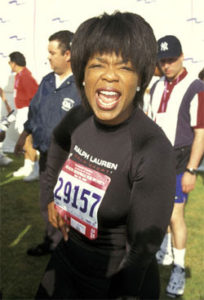
In 1994, Oprah Winfrey showed the world that if you surround yourself with the right people and follow a training program, you, too, could run a marathon. (She also lost seventy-two pounds). The real challenge, of course, is sticking to the strict regimen required to get you ready for race day. Those of you who have done it know that the race is the easy part, relative to what it takes to prepare for it—sixteen to twenty-four weeks (depending on the program) of the daily discipline to do what anyone can do on a given day.
The wonderful part is that when you do the things anyone can do every day for four to five months, you can accomplish something almost no one can do. That’s the magic. The task is no different, whether you want to be an artist, a scholar, or a business leader. The question is: Are you willing to do the things anyone can do on a daily basis to achieve what you want in life? Because most people aren’t willing, doing what anyone can do puts you a step ahead of the rest.
How Can We Do Things Anyone Can Do More Often?
Surround Ourselves With the Right People.
Wanting something is one thing. Being committed to doing what it takes to make it happen is quite another. Left to our own devices, we all too often don’t do the work—or we don’t do it over a sustained period of time. We might get off to a good start, but we eventually succumb to whatever rationale we can conjure that explains why we stopped.
Even the most disciplined among us can benefit from involving our friends, family members, and colleagues in helping us achieve our goals. While we all know that no successful person in the history of the world ever accomplished anything totally by him- or herself, we see self-help as by-your-self-help. As a result, we view our goals as solitary pursuits, and we don’t do the things anyone can do nearly often enough. This is why we fall short.
One thing we can do is seek out people who can play a positive role in our success and enlist their support. When we invite others to be our partners in success, they tend to help us do all those things anyone can. And when we do, we give ourselves the best chance to achieve our goals whatever they may be. That’s why doing what anyone can do help you HUGE!
*Includes excerpts from the book, What Anyone Can Do: How Surrounding Yourself With the Right People Will Drive Change, Opportunity, and Personal Growth.
Serving Emerging Leaders
Podcast: Play in new window | Download (Duration: 38:54 — 36.2MB)
Subscribe: Apple Podcasts | Spotify | iHeartRadio | TuneIn | RSS | More
What’s are today’s emerging leaders to do? Who do they learn from and how will they prepare themselves to lead their organizations in the coming years. Leo and Randy talk about what serving our next generation of leaders will entail.
Click here to watch/listen to our Year Of The Peer conversation with Jim Kouzes and hear what he says about learning leadership!
What The Power of Peers Taught Us About High Performing Teams
When Leon Shapiro and I tackled the subject of how and why formal peer groups for CEOs and business leaders work so well in The Power of Peers, our research revealed two important findings: 1) The Learning-Achieving Cycle common to high performing groups; and, 2) What we called the Five Factors necessary for making the Learning-Achieving reinforcing loop possible.
After conducting nearly 100 self-assessment workshops for peer groups since the book was published, I’ve learned that the Five Factors are more than just components of a condition, they are a system onto themselves. What’s more, this system (with minor modifications) provides insights into what drives high performing teams.
The five factors were originally presented independently (reinforcing one another of course) yet described as if one had little to do with the other. The Five Factors included: 1) Having the right people in the room (people who share common values and a purpose for being in the group, yet who are diverse in their own ways); 2) A Safe and Confidential Environment – a place where one feels safe to be open and vulnerable and where confidentiality is sacrosanct; 3) Valuable interaction – while providing emotional safety is critical, here we talked about the quality of the topics discussed, the discipline of asking great questions, and the tangible outcomes realized by the group members; 4) Accountability – not accountability to the leader of the group, but to the other members – a solemn promise to one another to be present and bring their A games to each and every meeting; 5) Having a smart guide, someone who served as a servant leader of the group and as the steward of the other four factors.
Today, I see the Five Factors not simply as overlapping, but as a system, much like the Learning-Achieving Cycle:
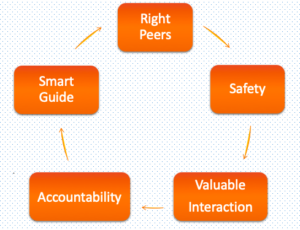 It starts off with having the right people, who come to know each other and trust one another enough to feel safe. This feeling of safety inspires and enables deeper conversations about the kind of serious topics that all too often never happen in the context of our daily lives. As group members grow to care about one another and their respective aspirations, it inspires each of them to bring their A games to every meeting, knowing that their colleagues are prepared to do the same. Their currency with one another lies in this place where everyone helps each other achieve new heights. The smart guide’s role as the servant leader is essentially to serve as the steward of the other four factors by driving this reinforcing loop. He/she makes sure that the group is always populated with people who add value, that the safe environment is never taken for granted, that members come prepared to share their toughest challenges and greatest opportunities, and that a context which allows for a culture of growing group accountability is able to flourish.
It starts off with having the right people, who come to know each other and trust one another enough to feel safe. This feeling of safety inspires and enables deeper conversations about the kind of serious topics that all too often never happen in the context of our daily lives. As group members grow to care about one another and their respective aspirations, it inspires each of them to bring their A games to every meeting, knowing that their colleagues are prepared to do the same. Their currency with one another lies in this place where everyone helps each other achieve new heights. The smart guide’s role as the servant leader is essentially to serve as the steward of the other four factors by driving this reinforcing loop. He/she makes sure that the group is always populated with people who add value, that the safe environment is never taken for granted, that members come prepared to share their toughest challenges and greatest opportunities, and that a context which allows for a culture of growing group accountability is able to flourish.
So you may be asking the same thing I did: Do these five group factors, presented as a reinforcing loop, apply to teams and offer guidance to team leaders? With some minor adjustments, I believe they do. Here’s how it plays out for teams:
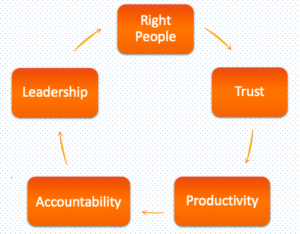
At your company, it’s about more than hiring good people, it’s about securing the right people. This involves understanding the difference between those who succeed at your company and those who don’t – despite their impressive resume and amazing interviewing skills. Having the right people is great, but now you have to get them to work together, which involves getting them to know and trust one another.
Once you have that, you can start looking at how you can help this team achieve higher levels of productivity and commitment to excellence. As a leader, think of tending a garden. Your job is to provide the right amount of water, sunlight, food, etc. to make your garden flourish. If you notice a plant not growing to its potential in one part of the garden, you move it to a better spot. I’ll take the gardener over the command and control leader any day – and so will your employees.
Now that your team is productive and they realize they can achieve a level of excellence that can only be obtained by working together, they drive each other’s level of performance to new heights, making the team as a whole that much stronger. The team leader plays the same role as the smart guide, serving as the steward of the other four factors, continually driving the reinforcing loop.
The best teams I’ve studied from business and in sports have all of these factors firing on all cylinders. Don’t let this throw you for a reinforcing loop! Think about how these factors play into your organizational teams and tell us what you find out!

